The Crimson Chain, Part I
Revolution, Mexico & Masonry...
“1 Why do the heathen rage, and the people imagine a vain thing?
2 The kings of the earth set themselves, and the rulers take counsel together, against the Lord, and against his anointed, saying,
3 Let us break their bands asunder, and cast away their cords from us.”
— Psalm 2:1-3 KJV
This post contains affiliate links, which means I may receive a commission or affiliate fee for purchases made through these links.
Unlock the mysteries of Biblical cosmology and enrich your faith with some of the top rated Christian reads at BooksOnline.club.
Use promo code SCIPIO for 10% off your order at HeavensHarvest.com: your one stop shop for emergency food, heirloom seeds and survival supplies.
Related Entries
The revolutions of the last three centuries are often painted as the triumph of the oppressed over tyrannical empires — a clash of ideals, a fight for freedom: The Mexican War for Independence is no exception to this trend.
Yet, just as we have seen with the French & Haitian Revolutions, the Italian Risorgimento, and Japan’s Meiji Restoration, this too was yet another chapter in the grand scheme orchestrated by the hidden hand of Masonry. Mexico was just another stage in the Masonic drama where the lodges played puppet master, pulling the strings of history to shape the destiny of nations. The revolutionaries who led these movements were not just freedom fighters — they were nearly all Masonic operatives, advancing a cause far more grandiose than the alleged independence of any single nation.
While the French Revolution is often heralded as the dawn of modern democracy, it was, in truth, a bloody rite of passage for the Masonic agenda. The Italian Risorgimento, which led to the unification of Italy, was similarly steered by Masonic lodges that sought to overthrow the old monarchies and establish a centralized, secular state. Even the Meiji Restoration in Japan, often seen as a period of progress and rapid modernization, was influenced by Western (i.e. Masonic) ideals that sought to reshape Japan into yet another compliant cog in the machine. Haiti too has this same hidden hand steering its fate unto this very day.
What appears on the surface to be heroic struggles for liberty are, in reality, grand Masonic rituals — one where the blood of patriots served as the sacrificial offering to their insatiable god of revolution.
— “A statuette holding Masonic working tools breaks free of its chains at the Oaxaca Masonic Temple”. Source: California Freemason.
The connections between these movements are not coincidental; they are the result of a concerted effort by Freemasonry to extend its influence across the nations. Each of these revolutions served to dismantle the existing social and political structures, replacing them with systems more amenable to Masonic control (emphasis mine):
[F]reemasonry's anticlericalism not only offered a model for cultural practice, masons also formed a vanguard of willing political emissaries.
…there is ample work on the importance of Masonic and other secret societies in the diffusion of liberal, Enlightenment ideas during the Independence and post-Independence eras. Furthermore, historians like Michael Costeloe and Josefina Zoraida Vasquez have explained how federalist and centralist political parties emerged from divisions between York and Scottish rite lodges. There is also a growing body of scholarship on the relationship between anticlerical liberals of the 1850s and the country's Masonic lodges.
— Benjamin Smith, Anticlericalism, Politics, and Freemasonry in Mexico, 1920-1940
Masonry sees the Church as a bastion which stands in stark opposition to their hollow ideals of liberty, equality, and fraternity. Mexico’s revolutions were not simply patriotic struggles for autonomy or self-determination — it was a spiritual war against the very foundations of a Christian society.
The Mexican War for Independence and the Mexican Revolution are but pieces of this larger puzzle.
“The religion of Freemasonry is not Christian.”
— Albert G. Mackey (33°), Masonic Historian
Spain was once a fiercely Catholic land and a bastion of Christendom before it became a breeding ground for Masonic subversion in the latter half of the 18th century.
On April 28th, 1738, Pope Clement XII banned membership within Freemasonry by papal decree (emphasis mine):
…certain Societies, Companies, Assemblies, Meetings, Congregations or Conventicles called in the popular tongue Liberi Muratori or Francs Massons or by other names according to the various languages, are spreading far and wide and daily growing in strength; and men of any Religion or sect, satisfied with the appearance of natural probity, are joined together, according to their laws and the statutes laid down for them, by a strict and unbreakable bond which obliges them, both by an oath upon the Holy Bible and by a host of grievous punishment, to an inviolable silence about all that they do in secret together. But it is in the nature of crime to betray itself and to show itself by its attendant clamor. Thus these aforesaid Societies or Conventicles have caused in the minds of the faithful the greatest suspicion, and all prudent and upright men have passed the same judgment on them as being depraved and perverted. For if they were not doing evil they would not have so great a hatred of the light.
— Pope Clement XII, In Eminenti
Afterwards, these lodges operated in the shadows, their members drawn from the ranks of the aristocracy and the military — those with influence, wealth, and the means to spread their spiritual poison. The roots of Freemasonry in Spain are entwined with the Enlightenment, that intellectual rebellion against God disguised as the pursuit of reason. The first Masonic lodges in Spain appeared in the early 17th century, introduced by French and English Masons who had infiltrated the courts and intellectual circles of Europe.
By the late 18th century, Freemasonry in Spain had grown into a formidable network, with its members occupying key positions in government, the military, and the Church itself:
When Masonry obtained a hold on Spain it was only a question of time until it permeated the American colonies. Popes condemned it for denying the existence of God, for declaring that the soul died with the body, and for spreading heresies. At first they blamed the Jews for scattering its seeds abroad. Kings feared it because Masons had a tendency to obey no authority but their grand master. Lodges, nevertheless, existed from an early date in Salamanca and in 1621 Dr. Domingo Zapata of the University of Salamanca was suspected of being an adherent of Masonry. Masonic writers maintained that by 1727 there were more than two hundred lodges in Spain and that they all belonged to the great lodge in London. It was not until 1780 that Masonry in Spain became independent of England and after that it was under French domination. For a time Aranda, the famous minister of Charles III, was the director of the organizations in Spain.
— Lillian Estelle Fisher, Early Masonry in Mexico (1806-1828)
These Masons were the Trojan horses within the Spanish fortress, eroding the foundations of the state while outwardly professing loyalty. Their ultimate goal was not just political reforms, it was the total destruction of the Christian civilization and the establishment of a secular, Masonic order.
As Spain succumbed to the Masonic disease, its colonies in the New World were not spared. The lodges established in Mexico during the late 18th century were direct offshoots of those in Spain, and they carried with them the same radical ideas that were tearing the mother country apart. Mexican Masons, many of whom were Criollo elites educated in Europe, returned home with the revolutionary ideals of their Spanish and French brethren.
— The Grand Lodge of Oaxaca, Mexico (pictured above) was founded in 1885.
It was the French Revolution that truly fanned the flames of Masonry in Spain. The revolutionaries in France, many of whom were Masons themselves, sought to export their antichrist ideology across Europe. As the French Revolution unfolded, Spanish exiles in France returned to their homeland with a new mission: to undermine the Spanish Crown and Church from within. They established new lodges and began to recruit from the burgeoning class of liberal intellectuals and military officers disillusioned with the old order.
After toppling the Spanish monarchy in 1808, Napoleon Bonaparte forced Charles IV and his son to renounce their claims. Joseph Bonaparte, the Grand Master of the Grand Lodge of France, was placed on the Spanish throne and all restrictions on Masons and Masonry were rescinded. Ever since there has been quietly at work in Mexico, as in other parts of the Americas, a leaven of Masonic ideals. In general these ideas derived from the political experience of three different countries - France, Spain, and the United States. In Mexico the influence of these ideas was also complicated by the fact that the early revolutionists were nearly all clerics.
In a sense these influences were all the same, for the liberal ideas brought to the Nuevo Mundo were all adaptations of Enlightenment (i.e. Masonic) philosophy.
For years, these Lodges plotted in the dark, gradually infecting the ruling Criollo class with the insidious doctrines of the Enlightenment — the very same ideas that had poisoned political and social thought throughout the 18th century. This secretive cabal, nurtured in the crucible of “liberalism”, laid the groundwork for the political upheavals that would soon convulse Mexico. The first overt appearance of Freemasonry in Mexico occurs in 1806, when a Lodge took root in the very heart of Mexico City, nestled within the residence of Don Manuel de Cuevas Moreno de Monroy Guerrero y Luyando on Calle de las Ratas (now Calle Bolívar).
The French Revolution had set the template for how to conduct a Masonic revolution: incite the masses with empty promises of liberty, equality, and fraternity, while secretly steering the movement toward the destruction of Christ’s authority.
“Action must be taken at once; there is no time to be lost; we shall yet see the oppressors' yoke broken and the fragments scattered on the ground.”
— Father Miguel Hidalgo y Castilla (1753-1811), Freemason
The roots of Freemasonry in Spain, nourished by the blood and chaos of the French Revolution, produced a deadly fruit that would poison Mexico for centuries to come.
The Masonic strategy was meticulously followed in Mexico. The first insurgents in the Mexican War for Independence were not merely patriots seeking freedom from Spanish tyranny: they were Masons, trained in the lodges of Spain & France, who sought to bring that same chaos to the New World. The lodges that spread across the Atlantic carried with them the seeds of revolution, secularism, and anti-clericalism. What began as a clandestine movement in the shadowy corners of Spanish society exploded into a continent-spanning conspiracy, with Mexico as one of its prime targets. The Mexican War for Independence, like the French Revolution before it, was a Masonic project from the start — a dark chapter in the long history of the Lodge’s war against Christendom.
The so-called father of Mexican independence, Miguel Hidalgo y Castilla, was a high-ranking Mason who used the altar not as a place of worship, but as a platform for sedition (emphasis mine):
Despite two Papal bulls forbidding Catholics from affiliating with the Masonic Order, many prominent men in Spain had become Freemasons since the Order was first established in the mother country in the seventeenth century; and since 1806 the Order had been growing in Mexico. Many of the early patriots, including Hidalgo and Allende, were members, and the liberal movement — with its strong anti-clerical feeling among even those who were faithful Catholics - was largely the work of Masons.
— Watson Smith, Influences from the United States on the Mexican Constitution of 1824
Father Hidalgo was made a Mason of the Scottish Rite in Mexico City, 1806, at The Lodge of the Rational Knights No. 9 (Lodge of La Logia de los Caballeros Racionales) which later became known as the Lodge of Bolívar (Logia de Bolívar). His teachings were steeped in Enlightenment thought, emblematic of the Masonic agenda to replace the Cross with the square and compass. Hidalgo’s Grito de Dolores was the signal for this Masonic revolution.
— Pater Hidalgo Mural, ill. by José Clemente Orozco.
At its inception, the Mexican Revolution was fundamentally a class conflict, spurred on by Masonic agitators. Remarkably, the Revolution saw the involvement of many members of the clergy amongst its leaders from the very beginning. These priests played a significant role in sustaining the conflict, often serving as leading officers in various battles. Notably, many of these clergy members were also Master Masons.
Padre Hidalgo was ultimately defeated at the Battle of Calderón on January 17th, 1811. Following his defeat, Hidalgo was excommunicated from the Catholic Church, tried by the civil authorities, and executed by beheading.
The revolutionary cause, however, did not perish with him.
“Freemasonry is deceptive and fraudulent. Its promise is light — its performance is darkness.”
— President John Quincy Adams, Letters on Freemasonry
In the long-running labyrinth of Mexico's quest for “independence,” one cannot ignore the omnipresent specter of Freemasonry.
Hidalgo’s successor, José María Morelos, continued the Masonic mission with a fervor that can only be described as fanatical. Morelos, a documented Mason, was instrumental in drafting Los Sentimientos de la Nación, a document that subtly embedded Masonic ideals of secularism and anti-clericalism. Morelos envisioned a new Mexico, not under the banner of Christ but under the veiled doctrines of The Lodge. Ignacio Allende, another key figure in the early stages of the war, was deeply entrenched in Masonry as well. Allende’s betrayal by his own comrades and subsequent execution reveal the fate that often befalls those who play with Masonic fire — they become sacrifices to their “greater good.”
Vicente Guerrero, a warrior in the latter stages of the war, was a Mason who carried the torch of rebellion after the deaths of Hidalgo and Morelos. Guerrero’s fight was less about freedom for Mexico and more about the continuation of the Masonic agenda, ensuring that the revolution did not die with its original leaders. His presidency after independence was a culmination of Masonic aspirations to install one of their own in the highest office of the land.

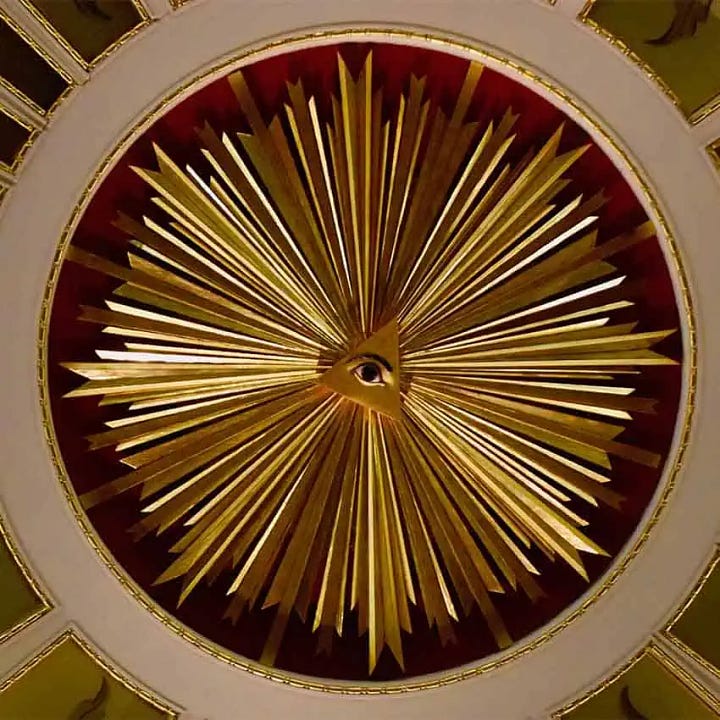
— The All Seeing Eye looks down upon the former parliament of Mexico. The National Palace in Mexico City was constructed from the stones of Moctezuma II’s palace.
The first President of Mexico, Guadalupe Victoria, was a Mason through and through. His rise to power marks the triumph of Masonic ideals in Mexico, transforming the new republic into a cloaked puppet state. Victoria’s administration laid the groundwork for the secularization of Mexico, a key goal of the Masons who sought to dismantle the influence of Christianity in the new nation.
Agustín de Iturbide, a royalist-turned-revolutionary, was yet another confirmed Mason who played both sides for his own gain. Iturbide’s sudden shift in allegiance from the Spanish Crown to the insurgents was, almost assuredly, not a spontaneous change of heart, but was a calculated move dictated by Masonic orders. His short-lived reign as Emperor of Mexico was merely a stepping stone in the Masonic plan to destabilize the region, leading to his eventual downfall at the hands of those who had used him as their pawn.
Ignacio López Rayón also took up the cause after Hidalgo, and is yet another figure whose Masonic ties surely dictated his actions: his leadership was marked by a relentless push towards the de-Christianization of the Mexican state. Leona Vicario, an oft celebrated heroine of the revolution, was deeply enmeshed in Masonic networks, primarily through her husband, Andrés Quintana Roo. Quintana Roo, a suspected Mason, played a significant role in the ideological formation of the new nation, pushing for a constitution that reflected those principles. Pedro Moreno and Francisco Javier Mina, both suspected Masons, were also part of this international network that connected Mexico’s struggle with broader Masonic movements in Europe and the Americas during the 19th century.
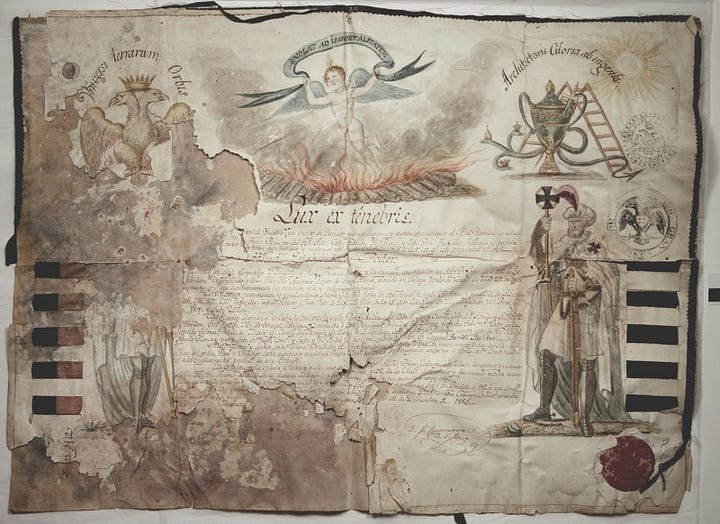
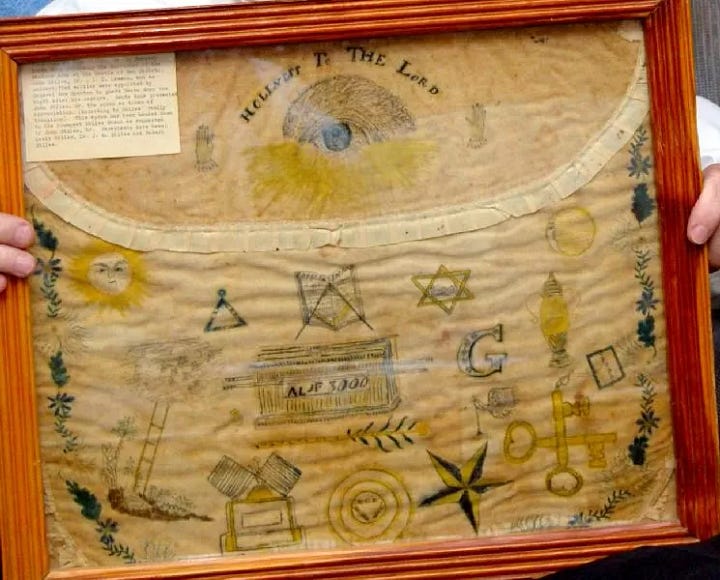
— (L) General Santa Anna’s Scottish Rite certificate. (R) The General’s Masonic Apron.
The infamous General Santa Anna, the self-styled Napoleon of the West, was not directly involved in the initial stages of the war for independence, although that would change. After having lined up with the Republicans against Iturbide, Santa Anna soon found himself with the support of Nicholas Bravo, Vincente Guerrero, and Guadalupe Victoria: all were Masons. Victoria, who had formerly opposed Santa Anna, now had his support for the presidency.
Within a short time, the “liberals” were in control of the Mexican government. Iturbide was forced to abdicate and went into exile in March of 1823 as the General ascended to power. Santa Anna has now been confirmed to be a Mason, a man whose actions in his later years would continue to shape Mexico’s destiny in line with The Craft’s ambitions. His opportunistic rise to power, numerous shifts in allegiance, and ultimate betrayal of his country reflect the Machiavellian tactics that are the hallmarks of Masonic subterfuge.
Santa Anna’s legacy is one of chaos and ruin — a fitting outcome for a man whose loyalty lay not with his nation but with the Lodge.
“When the people jump their barriers, almost no effort is powerful enough to stop it."
— Guadalupe Victoria (33°), First President of Mexico
Freemasonry’s influence was undeniable in the restoration of Mexico’s constitutional order. After Mexico secured its independence, the role of the Masonic lodges did not diminish; instead, it expanded, embedding itself like a tick into the nation’s political bloodstream. One need only look at the original Chamber of Deputies to see these Masonic fingerprints — their symbols were not just present, they were central: the All Seeing Eye is emblazoned on the chamber’s ceiling, casting its gaze over the deliberations of the country’s legislators.
Just as the French Revolution sought to redefine the family in line with their revolutionary ideals, the Masonic-influenced reforms in Mexico aimed to reshape society by weakening the family. As part of the broader secularization efforts, the liberal Mexican government implemented legal reforms in 1857 that directly impacted the institution of the family. By promoting no fault divorce — and thus usurping the Church and its teachings on marriage — the Masons sought to atomize and individualize society, breaking down the communal and religious bonds that held families together.
From 1831 onward, Freemasonry’s grip on the Mexican presidency became nearly absolute, with most of the Republic’s leaders being members of the Fraternity. This Masonic dominance didn’t end with the 19th century — it extends its reach well into the 21st, shaping the course of Mexican history through revolution after revolution. The Masonic lodges, serving as a breeding ground for political maneuvering and revolutionary thought, continue to exert their influence, steering the nation through turbulent times and ensuring that their ideals persist at the highest levels of government.
There can be no doubt that the Mexican War for Independence was a Masonic project from its inception. The key figures in this war were either confirmed Masons or heavily influenced by those ideals, and their actions reflect a broader agenda to subvert the established order in favor of a new, secular, Masonic world. The legacy of this war is not just the birth of a nation but the entrenchment of Masonic influence in the very fabric of Mexican society — a curse which continues to this day.
The bloody Mexican revolutions of the 19th and 20th century can be traced directly back to this clandestine clique, one whose impact would resonate through Mexico’s political landscape for generations to come.
Continued in Part II…
— Crimson Chain I, digital art, 2024.
“But anyone who knows the nature, desires and intentions of the sects, whether they be called masonic or bear another name, and compares them with the nature the systems and the vastness of the obstacles by which the Church has been assailed almost everywhere, cannot doubt that the present misfortune must mainly be imputed to the frauds and machinations of these sects.
It is from them that the synagogue of Satan, which gathers its troops against the Church of Christ, takes its strength.”
— Pope Pius IX, Quibus Quantisque Malis (1864)
Dispatches from Reality is a reader-supported publication. To receive new posts and support my work, consider becoming a free or paid subscriber.
This post contains affiliate links, which means I may receive a commission or affiliate fee for purchases made through these links.
Unlock the mysteries of Biblical cosmology and enrich your faith with some of the top rated Christian reads at BooksOnline.club.
Use promo code SCIPIO for 10% off your order at HeavensHarvest.com: your one stop shop for emergency food, heirloom seeds and survival supplies.



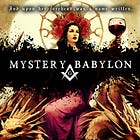
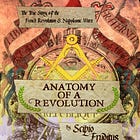

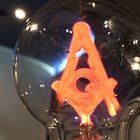

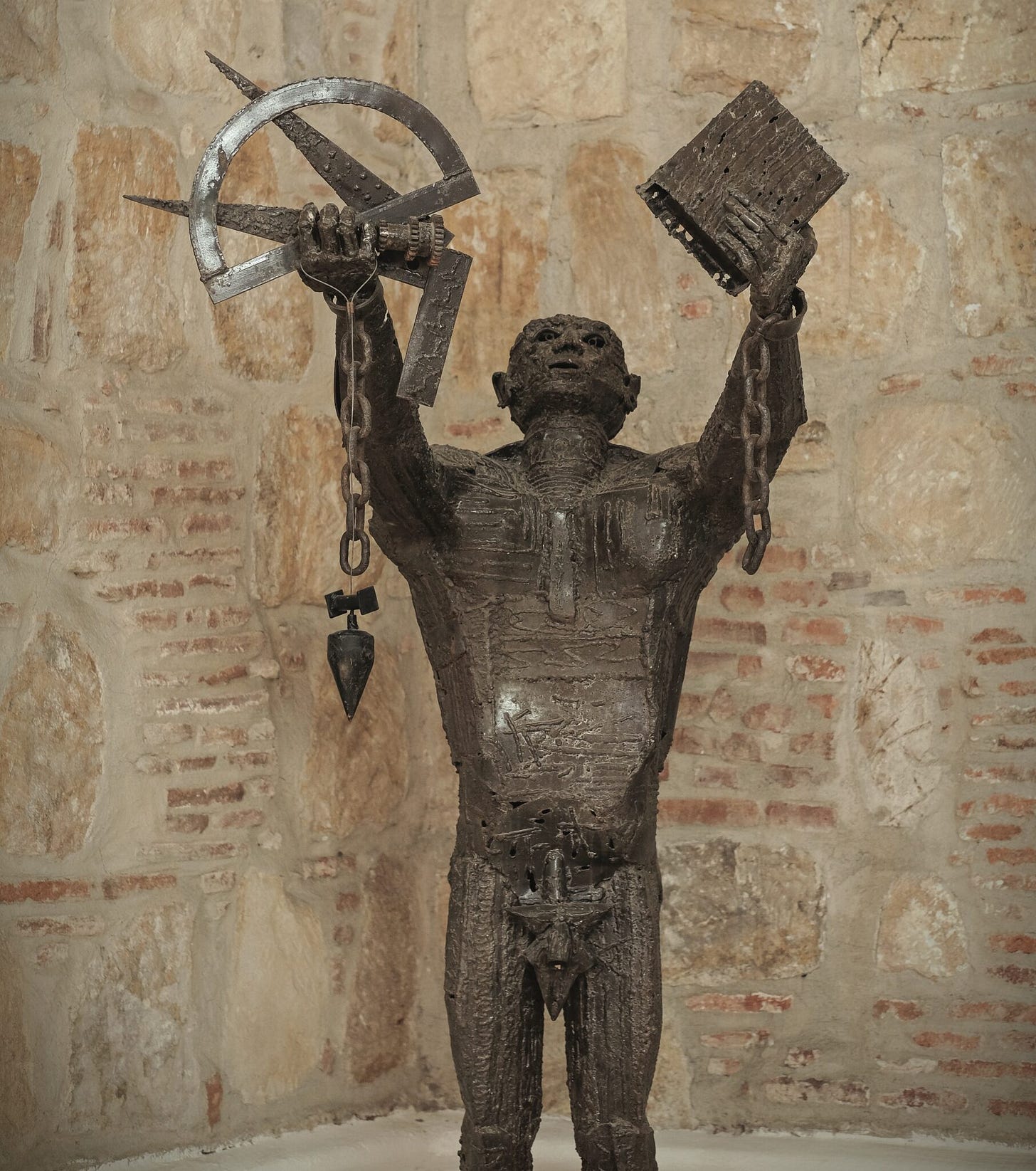

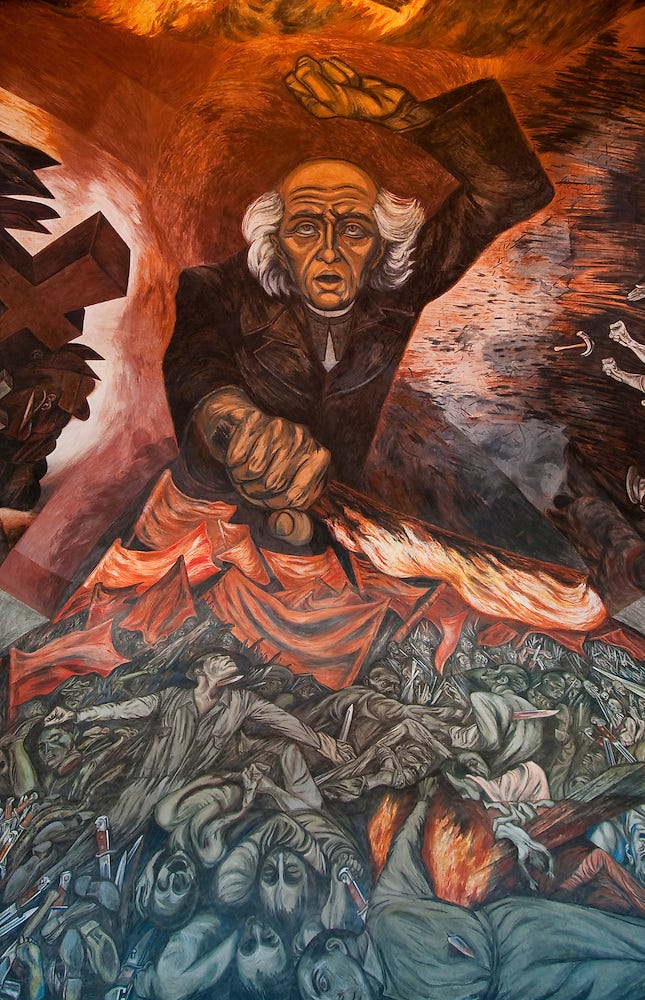
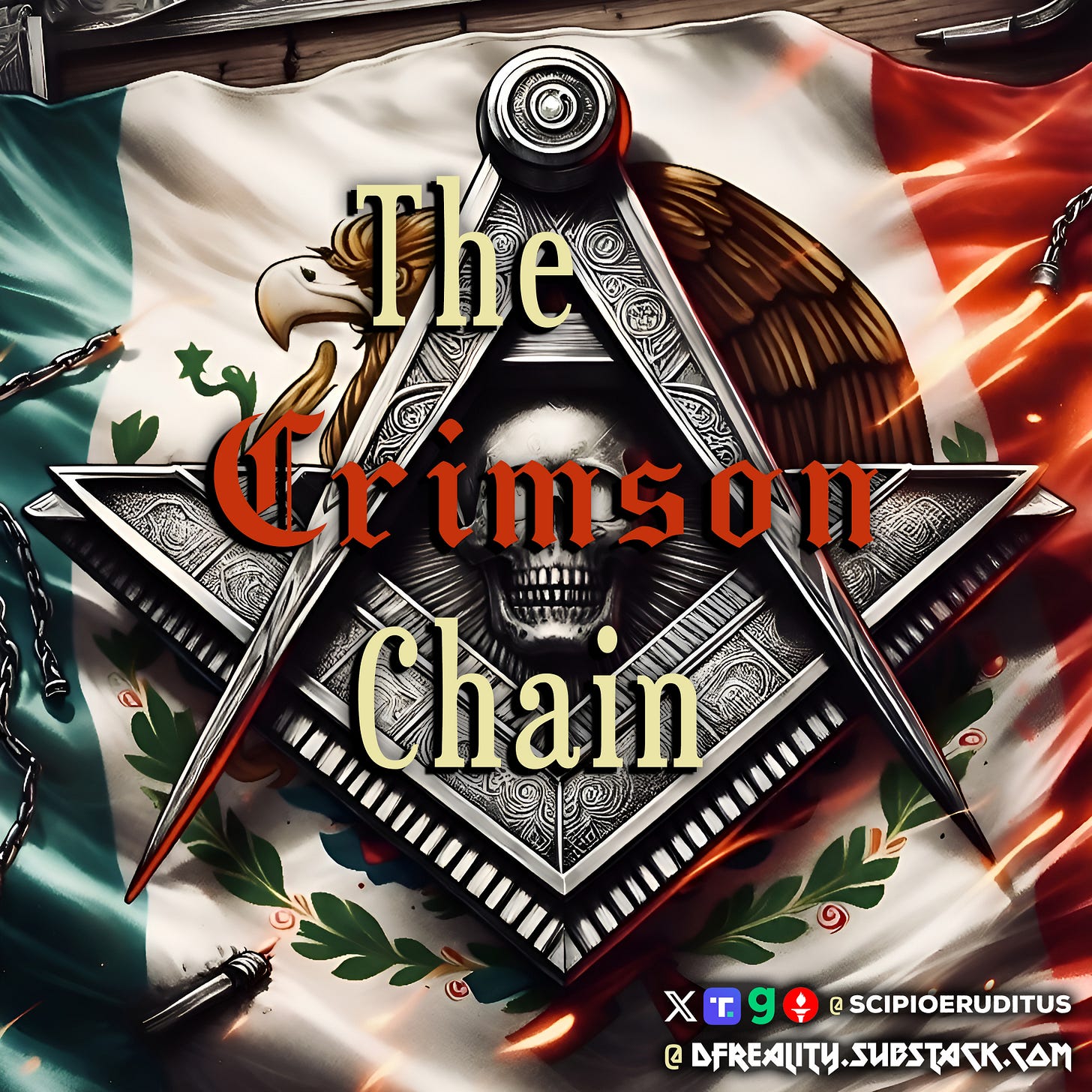
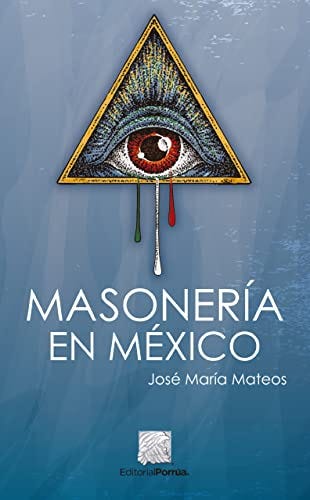

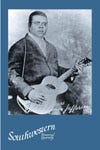
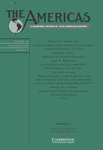
If you find a building, usually a library with 33 steps on the staircase, therein lies a hidden chamber. I have found them.
Excellent look into Mexican "revolution". It could have not happened otherwise...the fact that Spain conquered Mexico set this path for it.
To back up a bit, Sephardic jews let the Moors into Spain in 8th century, right?
The later Enlightenment deception was probably carried out by cryptos in Catholic Church. Look at what Loyola's Jezuits did and are doing to the world to this day.. it is a long and boring but devious game that these evil people play!
I have read how Freemasonry became a manipulative society only when it became the so called Speculative Freemasonry, in the 17th century in England. If there was an earlier, original Freemasonry, it could have been a remnant of Tartary, when humanity knew how to build the mega-cities that are now "melted".
It would make sense, official chronology states that expulsions of jews start in 1100 in Ukraine. Spain expulsions were much later, 1492.
And there is that crazy possibility that Ukraine expulsions are actually from year 100 AD because 1k years were added to the timeline.
The witch hunts in Europe are a puzzle. I wonder how much of it is jew-hunts and how mutch of it is lowclass women-hunts. When I read history of witch hunts, a renown work from a Croatian in 1950s that was famous in Europe, no mention of jew-hunts at all, with the conclusion: massive genocide of lowclass white women.
But when I read Ariel Toaff's "The Jews Of Europe and Ritual Murder - Blood Passover", we see that jew-hunts were a THING in North Italy, France, England, Switzerland and most of all Germany. And for a damn good reason! Ritual sacrifice of Christian children, one could say on a mass scale! And there Toaff states that these jews were all exclusively of Ashkenazi origin.
Also, how convenient is this spiel/play with nation states eh? Have goys closed in borders and make them think that they have sovereign governments. It is a coincidence that the Church, the Synagogue, the Mosque and the Monarchy would have any benefit from such a set up eh?